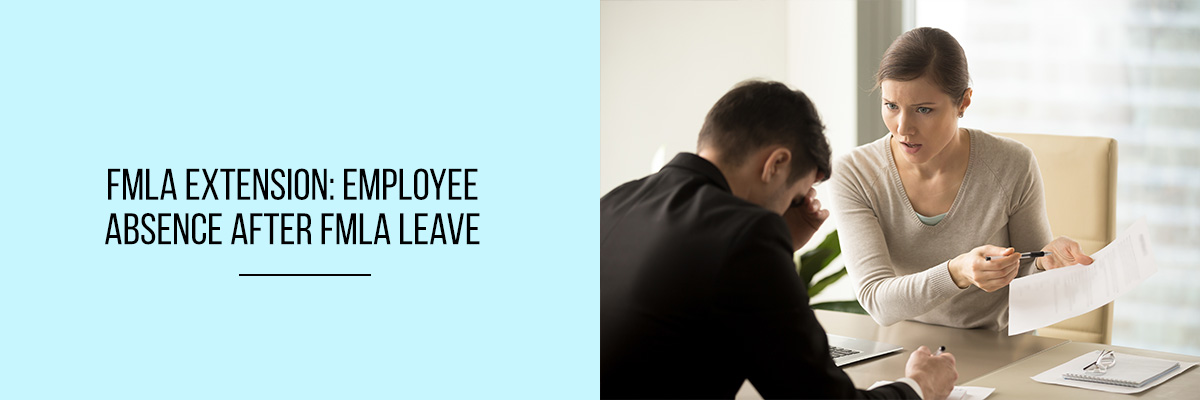The Family and Medical Leave Act (FMLA) is a critical law that provides eligible employees with up to 12 weeks of unpaid, job-protected leave per year for specific family and medical reasons. However, what happens when an employee exhausts their FMLA leave but is still unable to return to work? This scenario raises complex legal and administrative questions for HR professionals and employers.
This blog dives into the possible next steps, particularly how the Americans with Disabilities Act (ADA) may offer additional leave protections beyond FMLA, and how employers should navigate such situations while staying compliant.



What Happens When FMLA Ends?
Once an employee has used up their 12 weeks of FMLA leave, the employer is no longer legally required under FMLA to keep their position open or continue job-protected leave. However, automatically terminating or disciplining an employee for failing to return may lead to legal trouble, especially if the employee has a qualifying disability under the ADA.
Key Considerations for Employers:
- Did the employee communicate the need for continued leave?
- Is the medical condition considered a disability under the ADA?
- Has the employer engaged in the interactive process as required under the ADA?
ADA Leave Beyond FMLA
The Americans with Disabilities Act (ADA) prohibits discrimination against individuals with disabilities and requires employers to provide reasonable accommodations, which can include extended unpaid leave even after FMLA has been exhausted.
When Is ADA Leave Applicable?
If the employee’s condition qualifies as a disability, the employer must assess whether additional leave is a reasonable accommodation that does not impose an undue hardship.
Examples of Reasonable ADA Leave:
- A few more weeks of recovery time post-FMLA.
- Periodic flare-ups of a chronic condition that require intermittent time off.
- Flexible return-to-work schedules or part-time arrangements.
What Employers Should Do:
- Engage in the Interactive Process: Initiate a dialogue with the employee to understand their needs and assess what accommodations might work.
- Request Medical Documentation: Confirm the disability and the necessity of additional leave.
- Analyze Undue Hardship: Determine if the requested leave would significantly disrupt operations or cause financial hardship.
Misconceptions to Avoid:
- ADA leave is not capped at 12 weeks. Employers sometimes assume leave limits based on FMLA apply to ADA, which is not true.
- “Indefinite leave” is not required. ADA does not require open-ended leave without a return date, but a defined period of extra leave is often considered reasonable.
Tips for Managing Post-FMLA Absences
Navigating post-FMLA absences can be challenging, but the following best practices can help employers remain compliant:
- Review Policies: Ensure leave policies clearly state the interplay between FMLA, ADA, and other leave laws.
- Train Supervisors: Frontline managers should know when to escalate situations to HR.
- Document Everything: Maintain records of communication, accommodations offered, and the interactive process.
- Consult Legal Counsel: When in doubt, legal advice can prevent costly mistakes.
Real-World Scenarios
Scenario 1: An employee with cancer exhausts their 12 weeks of FMLA but needs four more weeks for treatment. Under ADA, this request may be considered reasonable, especially if the employee is expected to return shortly.
Scenario 2: An employee requests leave with no anticipated return date. The employer may consider this an undue hardship and is not obligated to accommodate indefinite leave under the ADA.
FMLA and ADA Compliance Training
Understanding the nuances of FMLA and ADA leave is crucial for HR professionals, managers, and business owners. One of the best ways to stay updated is through expert-led training and webinars.
Check out FMLA Webinars to gain deeper insights into:
- Managing intermittent leave.
- Handling post-FMLA accommodations.
- Legal updates and case studies.
These webinars are designed to help you confidently manage leave requests while staying compliant with federal regulations.
Conclusion
When an employee cannot return to work after using their FMLA leave, the employer must tread carefully. ADA leave may provide extended protection, and a blanket policy of termination can expose employers to legal liability.
By engaging in the interactive process, understanding what constitutes a reasonable accommodation, and staying informed through resources like FMLA webinars, employers can navigate these complex situations with clarity and confidence.


